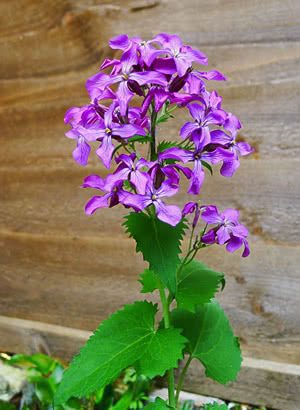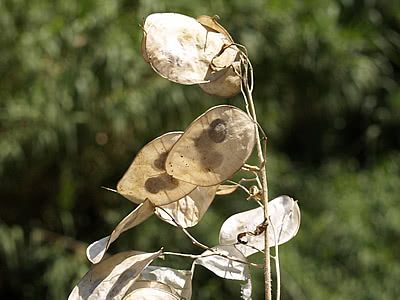The silver dollar (Lunaria annua) is an herbaceous plant that can behave as an annual or biennial, with ornamental flowering and fruiting. It is native to the Balkans region and southwest Asia. The genus name, Lunaria, comes from Latin and means “moon-shaped,” referring to the shape and appearance of the plant’s fruits. The specific epithet, annua, references the annual behavior of the species. Belonging to the same family as cabbages and turnips, the silver dollar has upright, hairy, and branched stems, reaching 90 cm (35 inches) in height and 30 cm (12 inches) in diameter. It features broad, rough, alternate, oval-acuminate leaves with serrated edges.
The basal leaves have long petioles, while the upper ones are sessile. In spring and summer, it produces raceme-type inflorescences with tetramerous flowers in white, pink, or violet, which are highly attractive to bees and butterflies. Following the flowering, it produces silique-type fruits that are dehiscent and membranous. They start off green and mature into light brown, becoming translucent. When the silique is mature and dry, valves on each side fall away, releasing the seeds and revealing a beautiful pearly membrane. This membrane can remain on the plant for a long time, depending on weather conditions. Branches with dried fruits, devoid of their seeds, are often used in persistent floral arrangements.

A plant that captures attention, both with its delicate flowering resembling an impressionist painting and its curious transparent fruits that evoke wonder and curiosity in observers. The silver dollar can be utilized in various ways. It looks spectacular in mass plantings in areas protected from strong sunlight by trees or structures, or even in a mix with other flowers and ground covers, adding a touch of Cottage style to the garden. There are numerous cultivated varieties, such as “Alba Variegata,” with variegated leaves and white flowers, and “Chedglow,” with violet flowers and purplish foliage.
It should be grown in partial shade, in fertile, deep soil rich in organic matter, and regularly irrigated. The silver dollar is not drought-tolerant and is quite sensitive to powdery mildew, so ensure there’s adequate moisture for the plant without overwatering. It prefers a temperate climate, with morning or late afternoon sun, and doesn’t tolerate intense heat. Fertilize every three months with NPK 10.10.10 during growth and NPK 04.14.08 during pre-flowering. It propagates easily from seeds that germinate in the first year, flowering and fruiting the following year. Directly sow them in beds, as the plant doesn’t handle transplanting well, and leave a spacing of 35 cm (14 inches) to 40 cm (16 inches) between plants. If allowed to grow freely, it self-seeds naturally, making intervention unnecessary, but this also makes it potentially invasive in certain situations.


